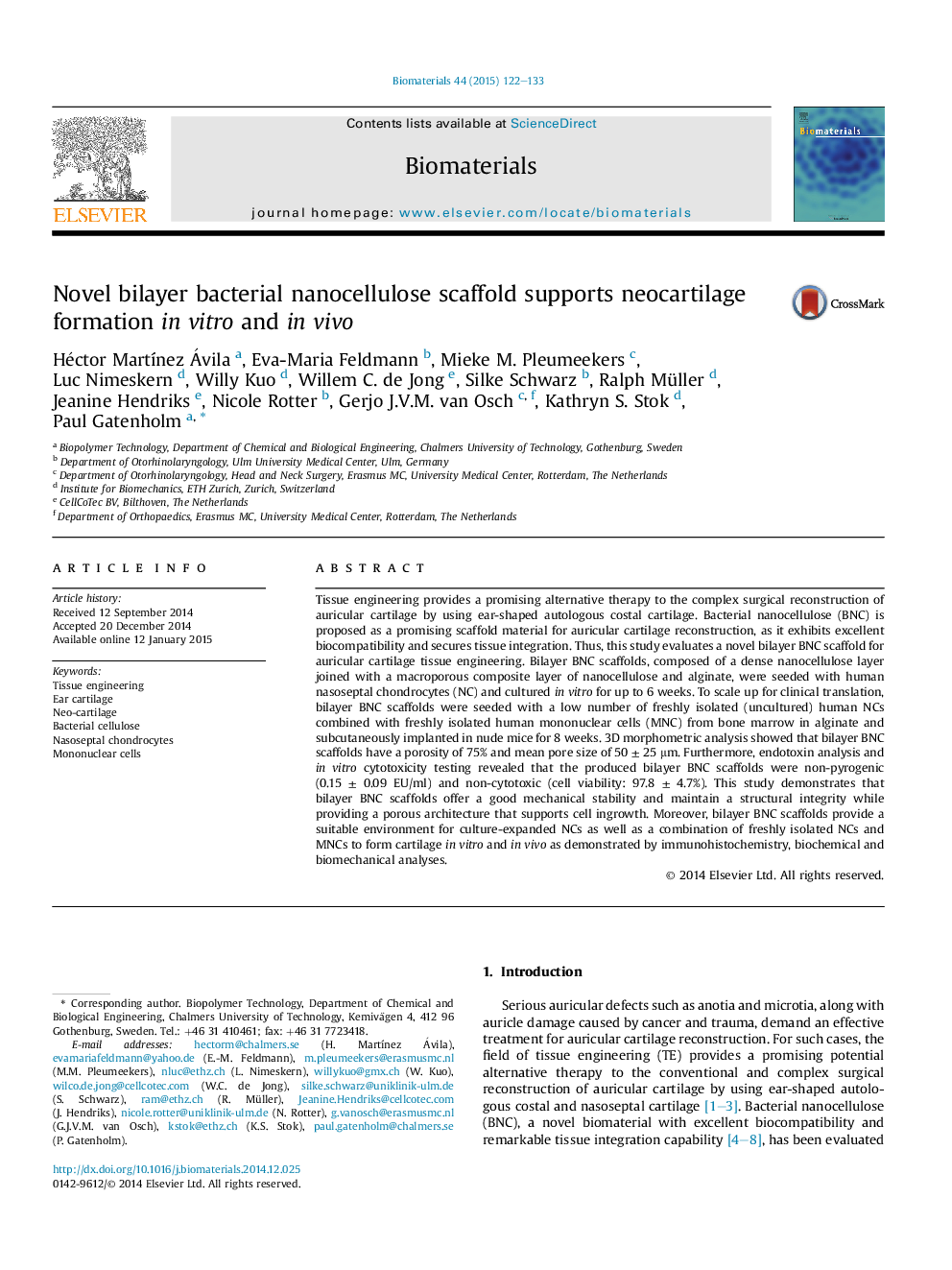| Article ID | Journal | Published Year | Pages | File Type |
|---|---|---|---|---|
| 6486224 | Biomaterials | 2015 | 12 Pages |
Abstract
Tissue engineering provides a promising alternative therapy to the complex surgical reconstruction of auricular cartilage by using ear-shaped autologous costal cartilage. Bacterial nanocellulose (BNC) is proposed as a promising scaffold material for auricular cartilage reconstruction, as it exhibits excellent biocompatibility and secures tissue integration. Thus, this study evaluates a novel bilayer BNC scaffold for auricular cartilage tissue engineering. Bilayer BNC scaffolds, composed of a dense nanocellulose layer joined with a macroporous composite layer of nanocellulose and alginate, were seeded with human nasoseptal chondrocytes (NC) and cultured in vitro for up to 6 weeks. To scale up for clinical translation, bilayer BNC scaffolds were seeded with a low number of freshly isolated (uncultured) human NCs combined with freshly isolated human mononuclear cells (MNC) from bone marrow in alginate and subcutaneously implanted in nude mice for 8 weeks. 3D morphometric analysis showed that bilayer BNC scaffolds have a porosity of 75% and mean pore size of 50 ± 25 μm. Furthermore, endotoxin analysis and in vitro cytotoxicity testing revealed that the produced bilayer BNC scaffolds were non-pyrogenic (0.15 ± 0.09 EU/ml) and non-cytotoxic (cell viability: 97.8 ± 4.7%). This study demonstrates that bilayer BNC scaffolds offer a good mechanical stability and maintain a structural integrity while providing a porous architecture that supports cell ingrowth. Moreover, bilayer BNC scaffolds provide a suitable environment for culture-expanded NCs as well as a combination of freshly isolated NCs and MNCs to form cartilage in vitro and in vivo as demonstrated by immunohistochemistry, biochemical and biomechanical analyses.
Related Topics
Physical Sciences and Engineering
Chemical Engineering
Bioengineering
Authors
Héctor MartÃnez Ávila, Eva-Maria Feldmann, Mieke M. Pleumeekers, Luc Nimeskern, Willy Kuo, Willem C. de Jong, Silke Schwarz, Ralph Müller, Jeanine Hendriks, Nicole Rotter, Gerjo J.V.M. van Osch, Kathryn S. Stok, Paul Gatenholm,
